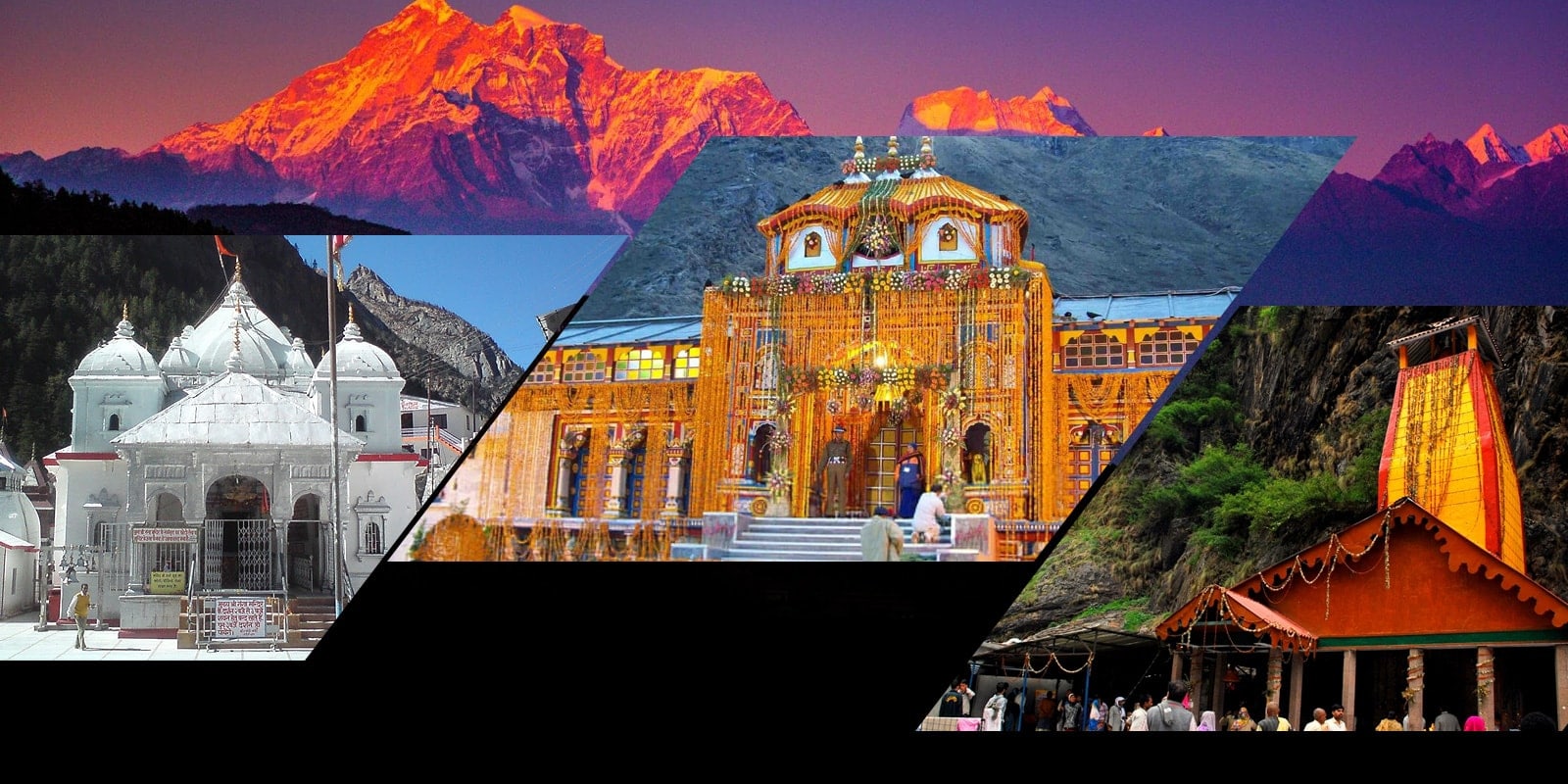Day 01: Delhi – Rishikesh (230 kms / 06-07 hrs)
Upon arrival in Delhi meeting and assistance followed drive to Rishikesh by road, on arrival at Rishikesh check-in to hotel. Evening free for Relax & briefing. Dinner & Overnight stay at hotel.
RISHIKESH:
24 Kms. from Hardwar, located in the laps of lower Himalayas, and is surrounded by scenic beauty of the hills on three sides with Holy Ganga flowing through it. The whole place is considered to be sacred as it is believed that meditation at this place leads to attainment of salvation. There are many temples-some ancient, some new along the river Ganges. Rishikesh is important not only as pilgrimage centre closely associated with the Ramayana, but also as home for many important centres of Hindu religious thought and spirituality, and as a very great Yoga Centre. There are many great ashrams and Yoga institutes here. Rishikesh is also the gateway and the start-off point for journeys to important religious places like Badrinath, Kedarnath, Gangotri and Yamunotri.
Day 02: Rishikesh – Barkot (230 kms / 07-08 hrs)
After breakfast go for local S/seen visit Ram Jhula, Laxman Jhula & Swargaashram, return back to Hotel then drive to Barkot via Mussoorie En-route visit Kempty fall. Upon arrival check in to the hotel. Dinner & Overnight stay at hotel.
Day 03: Barkot –Jankichatti – Yamunotri – Barkot (50 kms/ & 6 kms. trek one way)
After an early breakfast proceed to Yamunotri, 50 Kms drive up to Jankichatti then 6 Kms. trek to Yamunotri, here one can cook rice by packing it in a cloth and dipping it in the hot water of the hot kund. Pilgrims take this cooked rice home as “Prasad”. Here near the temple “Pooja” can be offered to Divya Shila, after taking bath in Jamunabai Kund and having “Darshan” of “Yamunaji”. Drive back to Barkot. Dinner & Overnight stay at hotel.
YAMUNOTRI:
Maharani Gularia of Jaipur built the temple in the 19th Century. It was destroyed twice in the present century and rebuilt again. Yamunotri temple is dedicated to Goddess Yamuna. Yamunotri is the source of revered river Yamuna which originates from the Champasar Glacier lying 1 km ahead of the shrine situated at an elevation of 3235mts above sea level. The approach is extremely difficult and pilgrims therefore offer Pooja at the temple itself. Yamunotri was the home of an ancient sage Asit Muni. Yamuna is the daughter of the Sun just like Yama who is considered his son. It is believed that Yama would not torment any person at the time of death who takes a holy dip in Yamuna, his sister.
SURYA KUND:
There are a Number of thermal springs in the vicinity of the temple, which flows into numerous pools. The most important is Surya Kund.
DIVYA SHILA:
A rock pillar, worshiped before entering the Yamunotri Temple.
Day 04: Barkot –Uttarkashi (100Kms)
After breakfast drive to 100 Km. to reach Uttarkashi. Check in to hotel, evening free for leisure & local attractions. Dinner & overnight stay at Hotel.
UTTARKASHI:
Uttarkashi is a small and beautiful town, situated between two rivers; Varuna and Ashi, whose water flow into the Bhagirathi from either side of the town. Elevated, at a height of 1588 meters, this little town is very similar to Kashi and Varanasi, in that it has the same kind of temples and Ghats and likewise, a north or ‘Uttar’ facing river. The major temple is the Vishwanath Temple, dedicated to Lord Shiva. Two other very important temples are located in the Chowk area. These are the Annapurna Temple and the Bhairav Temple. It is said, that once there were 365 temples here. Hiuen Tsang referred to this place as Brahma Puran, while the Skanda Puran has recorded it as Varunavata. It is believed that in the second millennium of Kaliyug, Kashi will be submerged, and Uttarkashi will replace it as an important religious centre.
Day 05: Uttarkashi – Gangotri – Uttarkashi (90 kms one way /22 Kms.)
After breakfast leave for Gangotri early in the morning, Post offering prayers & pooja darshan at Gangotri Temple later drive back to Uttarkashi. Dinner & Overnight stay at Hotel.
GANGOTRI:
Gangotri temple is 18th Century temple dedicated to Goddess Ganga. It is located near a sacred stone where king Bhagirath worshipped Lord Shiva Ganga is believed to have touched earth at this spot. Accordingly to another legend, Pandavas performed the great “Deva Yagna” here to a tone the death of their kinsmen in the epic battle of Mahabharata. The temple is an exquisite 20 ft. high structure made up of white granite.
Day 06: Uttarkashi – Rudraprayag (190 kms / 8 hrs.)
After breakfast leave for almost day long drive to Rudraprayag en-route see the heritage city of Tehri Submerged in to the Mighty waters of Holy River Ganges, due to construction of TehriDam (The Hydro Electric Project). On arrival at Rudraprayag check in to hotel. Overnight stay at Hotel.
RUDRAPRAYAG:
A small pilgrim town on the holy confluence of river Alaknanda and Mandakini which is venerated as one of the five sacred confluences or the ‘PanchPrayag’. Rudraprayag It is named after Rudra, an aspect of Lord Shiva. According to a legend Lord Shiva appeared here as ‘Rudra’ to bless Narad Muni. An ancient shrine is dedicated to Lord Shiva in the form of ‘Rudra’. Rudraprayag is of immense significance for the pilgrims of Char Dham Yatra, as it is the junction for visiting Badrinath and KedarnathDham.
Day 07: Rudraprayag– Badrinath (155 Kms / 7 hrs.)
After an early breakfast leave for Badrinath. On arrival check in to hotel , after lunch spend some time visiting Vyas Cave, Ganesh Cave,Bhim Bridge & origin of River Saraswati at Mana village the last village before the Tibetan border, later go to temple for holy Darshan / Pooja & attend evening Arti.Overnight stay at hotel.
BADRINATH:
Cradled in the twin Mountain ranges of Nar and Narayan is the holiest of the four main shrines – Badrinath along the left bank of river Alaknanda with the towering Neelkantha Peaks as the splendid backdrop. Once the spot was carpeted with ‘badris’ or wild berries and hence was famous as Badri van. Legend has it, when the Ganga was requested to descend to earth to help suffering humanity; the earth was unable to withstand the force of its descent. Therefore the mighty Ganga was split into 12 holy channels. Alaknanda was one of them that later became the abode of Lord Vishnu or Badrinath.
Day 08: Badrinath – Srinagar (190 kms / 07-08hrs)
Early Morning Mahaabhishek Pooja/ Darshan, breakfast then drive to Srinagar en-route visitVishnuprayag, Karnprayag, Nandprayag&Rudraprayag. Later drive to Srinagar. Dinner & overnight stay at Hotel.
Vishnuprayag : Confluence of River Dhauli Ganga and Alaknanda River.
Karnprayag : Confluence of River Pindari and Alaknanda River.
Nandprayag : Confluence of River Nandakini and Alaknanda River.
Rudraprayag : Confluence of River Mandakini and Alaknanda River.
Day 09: Srinagar – Haridwar (125 kms / 05 -06hrs)
After breakfast drive to Haridwar en-route visitDeoprayag, (The Confluence of River Alaknanada & Bhagirathi) to become Ganga. Reach Haridwar in the afternoon, check in to hotel & get relaxed, and visit Mansa Devi, Chandi Devi Temples & Evening attend Famous Ganga Arti at Har-ki-Pauri. Overnight stay at Hotel.
HARIDWAR:
Haridwar, lying at the feet of Shiva’s hills, i.e. Shivaliks, in the Haridwar district of Uttarakhand. Suryavanshi prince Bhagirath performed penance here to salvage the souls of his ancestors who had perished due to the curse of sage Kapila. The penance was answered and the river Ganga trickled forth forms Lord Shiva’s locks and its bountiful water revived the sixty thousand sons of king Sagara. In the traditional of Bhagirath, devout Hindus stand in the sacred waters here, praying for salvation of their departed elder. It is doorway to the sources of the Ganga and the Yamuna, 3000 to 4500 meters up into the snowy ranges of the central Himalayas. The ‘Aarti’ worship of the Ganga after sunset and the floating ‘dia’ (lamp) is a moving ritual.
Day 10: Haridwar – Delhi (200 kms / 06- 07 hrs.)
After breakfast, leave for Delhi. On arrival in Delhi, Drop you at Railway station / Airport for onward journey.





